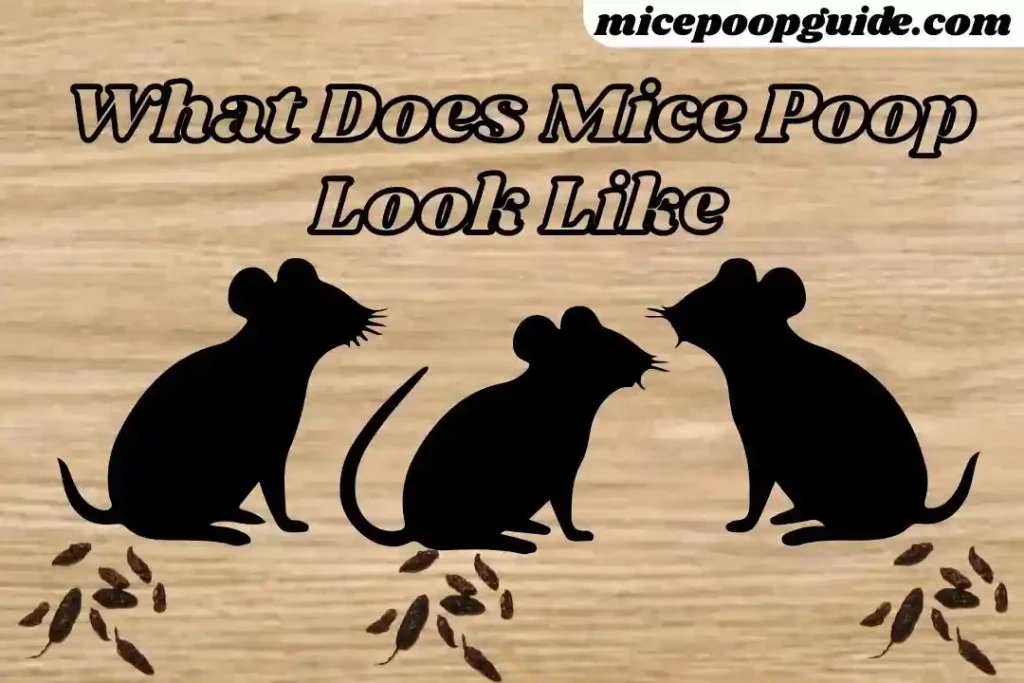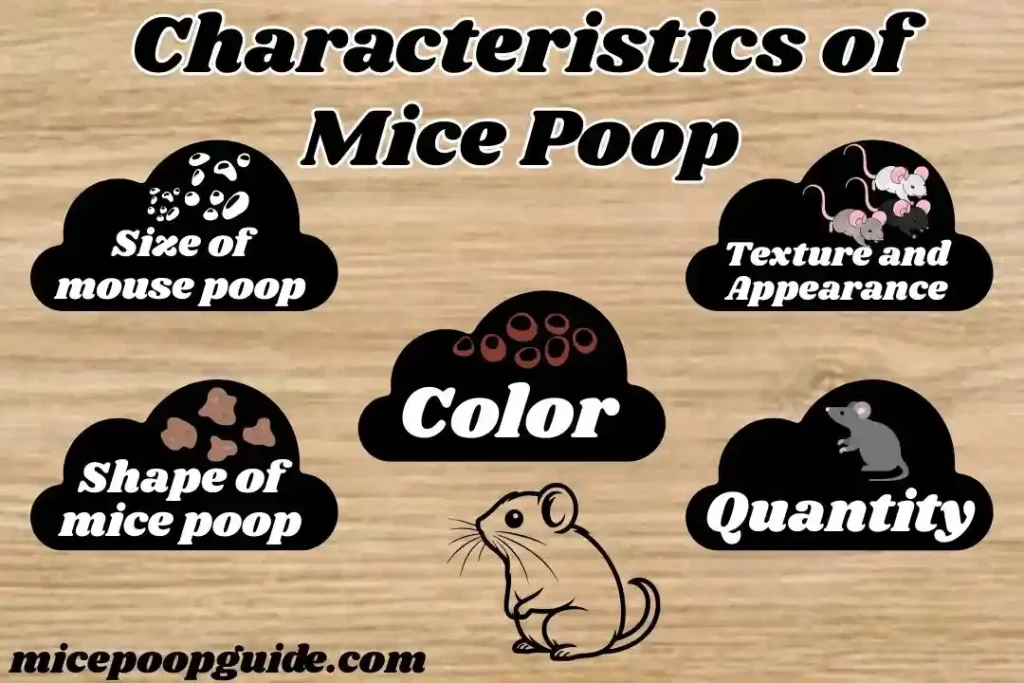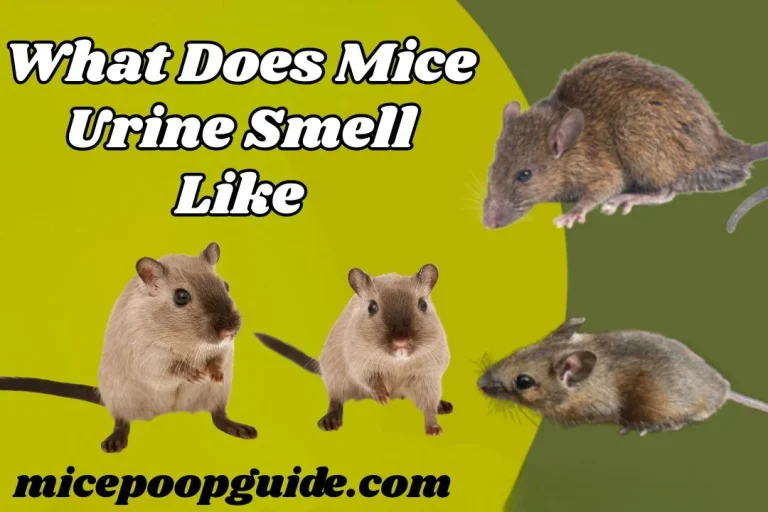What Does Mice Poop Look Like
Discover small, dark and cylindrical droppings or poop (2 mm thick, 3-6 mm long) in your house. You might wonder if these droppings belong to mice or any other pest like a rat or you might want to know “What does mice poop look like”. Clear identification of mice poop helps to overcome your anxiety and take timely action to control the situation. Mice can cause significant damage to your property including wiring insulation and food items stored in the kitchen.

Characteristics of Mice Poop
Size of mouse poop
Typically mice or mouse poop are quite small in size ranging from ⅛ to ¼ inch or 3-6 mm in length with 2 mm thickness. The small size of mice helps to differentiate mice poop from larger animals poop easily.
Shape of mice poop
Mice poop usually has a cylindrical or granular shape with tapered ends that are resembling with the grains of rice. The rice-like structure of mice poop helps to differentiate it from other rodents such as rats.
Color
The color of mice poop changes over time. Fresh mice poop has dark brown or black color while old poop or droppings fade to dark grey color.
Texture and Appearance
Understanding the texture and appearance of mice poop also provides important clues about the presence and activity of mice. Usually, the texture and appearance of droppings change over time depending upon the freshness and age.
Fresh mouse droppings are soft, shiny, and moist and will squish if pressed, which clearly indicates recent activity. Old droppings lose their shine over time and become dull, crumbled, hardened and brittle.
Quantity
Mice are prolific and frequent droppers. A single mouse typically produces 50 to 75 droppings or pellets per day.

Where to find Mice Poop
Common areas in Home
Mouse droppings can be found in various parts of your home in search of food, shelter, or nesting sites. Knowing where to look for mouse droppings can help detect early infestations and take necessary action to address them.
Here are some of the most common places where mouse droppings are often found.
Nesting Sites
Mice usually build their nests from paper, fabric and insulation. They prefer to build it in hidden areas where they can remain hidden and undisturbed. One of the most primary places to find mice poop is near their nesting sites.
Some common nesting places are given below.

Difference between Mice Droppings and Other Rodents
Identifying the difference between Mice droppings and other rodents such as rats and squirrel is essential to get idea about the type of infestation you may have in your house.
| Characteristics | Mice Poop | Rat Poop | Squirrel Poop |
| Size | ⅛ to ¼ inch or 3-6 mm | ½ to ¾ inches or 12-18 mm | ⅜ inch or 5-8 mm |
| Shape | Small, cylindrical, with tapered ends, like rice grains | Larger, Rectangular with blunt or rounded ends; like a large raisin or small olive | Cylinderical with rounded ends: similar to rat droppings but slightly smaller and more uniform |
| Color | Dark brown to black | Dark brown to black | Dark brown or light brown to black |
| Texture (Fresh Droppings) | Soft, shiny and wet | Dark, shiny and moist | Smooth , shiny and moist |
| Texture (Old Droppings) | Hard, dry, powdery and crumbly texture | Hard, dry, dusty , brittle and crumbled texture | Dry, crumbled, rough and powdery |
| Volume | 50-75 droppings per day | 30-50 droppings per day | After few days |
| Location | Kitchen, Under Appliances, Pastries, food storage aeas, basements, attics and garage | Basement, Attics, garage, Bathrooms and large open spaces | Near Trees, Around outdoors areas, sometimes in garage or basements, around bird feeders, inside crawl spaces in home |
| Other Features | Often found near food sources and nesting sites | Found in less accessible and hidden places, | Found near nuts and seeds |
Conclusion
Understanding about What does mice poop look like and how it differs from other rodents is a very crucial step. The characteristics of mice poop helps to differentiate it from other rodents and confirms the presence of mice in your house. Mice poop are small and dark commonly found in kitchen, basements and attics. Proper identification and handling of poop help to mitigate health risks associated with infestation.


